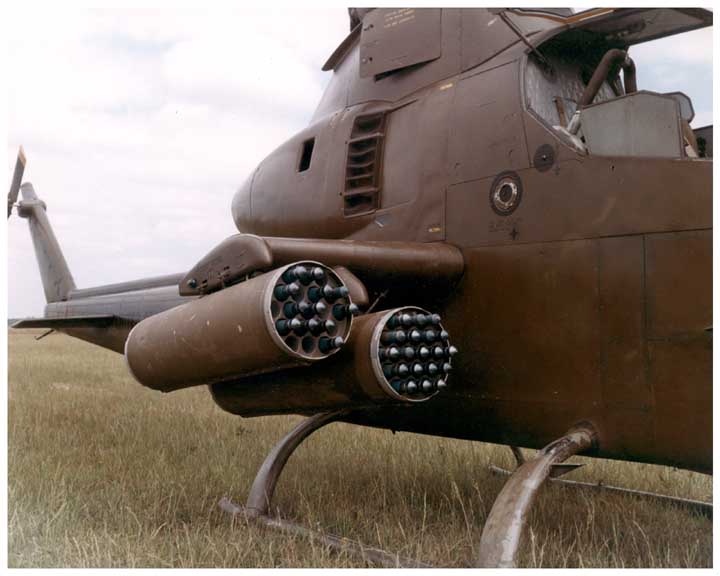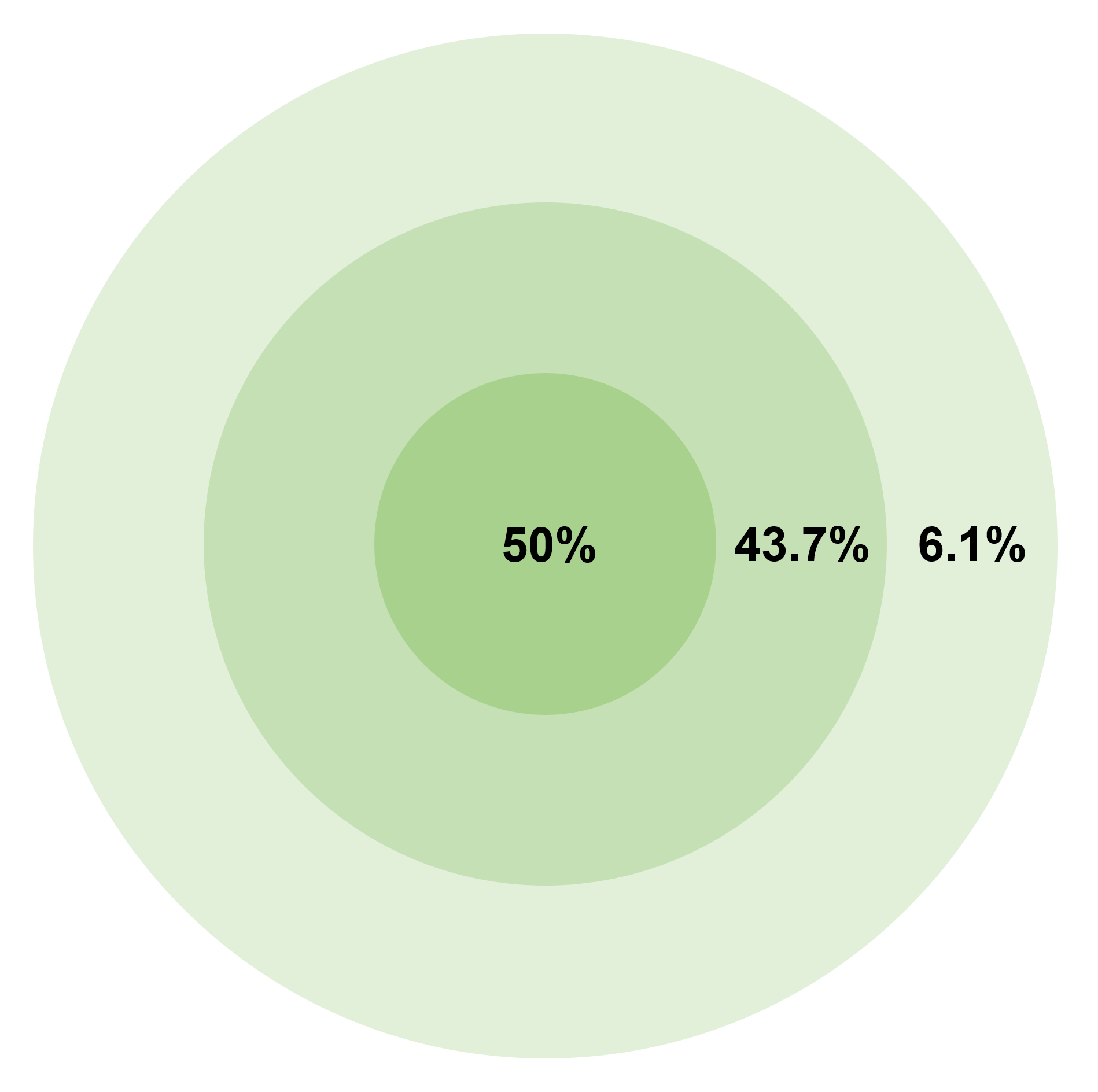|
APKWS
The AGR-20 Advanced Precision Kill Weapon System (APKWS) is a design conversion of Hydra 70 unguided rockets with a laser guidance kit to turn them into precision-guided munitions (PGMs). APKWS is approximately one-third the cost and one-third the weight of the current inventory of laser-guided weapons, has a lower yield more suitable for avoiding collateral damage, and takes one quarter of the time for ordnance personnel to load and unload. Development Where possible the system utilizes existing Hydra 70 components such as launchers, rocket motors, warheads and fuzes. The weapon bridges the gap between the Hydra 70 and AGM-114 Hellfire systems and provides a cost-effective method of engaging lightly armored point targets. APKWS is the U.S. government's only Program of Record for the semi-active, laser-guided rocket. It converts the Hydra 70 unguided rocket into a precision guided munition through the addition of a mid-body Guidance system, guidance unit developed by BAE Systems ... [...More Info...] [...Related Items...] OR: [Wikipedia] [Google] [Baidu] |
Hydra 70
The Hydra 70 rocket (weapon), rocket is an American made diameter fin-stabilized unguided rocket used primarily in the air-to-ground role. It can be equipped with a variety of warheads, and in more recent versions, guidance systems for point attacks. The Hydra is widely used by US and allied forces, competing with the Canadian CRV7, with which it is physically interchangeable. Overview The Hydra 70 is derived from the diameter Mk 4/Mk 40 Folding-Fin Aerial Rocket developed by the United States Navy for use as a free-flight aerial rocket (weapon), rocket in the late 1940s. The Mk 40 was used during the Korean War, Korean and Vietnam War, Vietnam wars to provide close air support to ground forces from about 20 different firing platforms, both fixed-wing and armed helicopters. The main change made to produce the Hydra was the Mk. 66 motor which uses a new propellant that offers considerably more thrust, (Mod 2/3) (Mod 4). The fins of the Mk 40 flipped forward from the rear ... [...More Info...] [...Related Items...] OR: [Wikipedia] [Google] [Baidu] |
Precision-guided Munition
A precision-guided munition (PGM), also called a smart weapon, smart munition, or smart bomb, is a type of weapon system that integrates advanced guidance and control systems, such as Global Positioning System, GPS, laser guidance, or Infrared search and track, infrared sensors, with various types of Ammunition, munitions, typically Missile, missiles or Shell (projectile), artillery shells, to allow for high-accuracy strikes against designated Targeting (warfare), targets. PGMs are designed to precisely hit a predetermined target, typically with a margin of error (or circular error probable, CEP) that is far smaller than conventional unguided munitions. Unlike unguided munitions, PGMs use active or passive Control system, control mechanisms capable of steering the weapon towards its intended target. PGMs are capable of mid-flight course corrections, allowing them to adjust and hit the intended target even if conditions change. PGMs can be deployed from various platforms, includi ... [...More Info...] [...Related Items...] OR: [Wikipedia] [Google] [Baidu] |
AGM-114 Hellfire
The AGM-114 Hellfire is an American missile developed for anti-armor use, later developed for precision drone strikes against other target types, especially high-value targets. It was originally developed under the name " Heliborne laser, fire-and-forget missile", which led to the colloquial name "Hellfire" ultimately becoming the missile's formal name. It has a multi-mission, multi-target precision-strike ability and can be launched from multiple air, sea, and ground platforms, including the MQ-1 Predator and MQ-9 Reaper. The Hellfire missile is the primary class air-to-ground precision weapon for the armed forces of the United States and many other countries. It has also been fielded on surface platforms in the surface-to-surface and surface-to-air roles. Description Most variants are laser-guided, with one variant, the AGM-114L "Longbow Hellfire", being radar-guided. Laser guidance can be provided either from the launcher, such as the nose-mounted opto-electronics of the ... [...More Info...] [...Related Items...] OR: [Wikipedia] [Google] [Baidu] |
Unguided Rocket
In military terminology, a rocket is a self-propelled, unguided or guided, weapon-system powered by a rocket engine. Though used primarily as medium- and long-range artillery systems, historically rockets have also seen considerable use as air-to-surface weapons, some use as air-to-air weapons, and even (in a few cases) as surface-to-air devices. Examples of modern surface-to-surface rocket systems include the Soviet BM-27 Uragan and the American M270 Multiple Launch Rocket System. In military parlance, a rocket differs from a missile primarily by lacking an active guidance system; early missiles became known as "guided rockets" or "guided missiles". Some rockets were developed as unguided systems and later upgraded to guided versions, like the GMLRS, and these generally retain the term "rocket" instead of becoming "missiles". Rockets or missiles that travel underwater, like the VA-111 Shkval, are known as "torpedoes", whatever their propulsion system. Early development The ... [...More Info...] [...Related Items...] OR: [Wikipedia] [Google] [Baidu] |
Semi-active Laser Homing
Laser guidance directs a robotics system to a target position by means of a laser beam. The laser guidance of a robot is accomplished by projecting a laser light, image processing and communication to improve the accuracy of guidance. The key idea is to show goal positions to the robot by laser light projection instead of communicating them numerically. This intuitive interface simplifies directing the robot while the visual feedback improves the positioning accuracy and allows for implicit localization. The guidance system may serve also as a mediator for cooperative multiple robots. Examples of proof-of-concept experiments of directing a robot by a laser pointer are shown on video. Laser guidance spans areas of robotics, computer vision, user interface, video games, communication and smart home technologies. Commercial systems Samsung Electronics Co., Ltd. may have been using this technology in robotic vacuum cleaners since 2014. Google Inc. applied for a ... [...More Info...] [...Related Items...] OR: [Wikipedia] [Google] [Baidu] |
Circular Error Probability
Circular error probable (CEP),Circular Error Probable (CEP), Air Force Operational Test and Evaluation Center Technical Paper 6, Ver 2, July 1987, p. 1 also circular error probability or circle of equal probability, is a measure of a weapon system's precision in the military science of ballistics. It is defined as the radius of a circle, centered on the aimpoint, that is expected to enclose the landing points of 50% of the rounds; said otherwise, it is the median error radius, which is a 50% confidence interval. That is, if a given munitions design has a CEP of 100 m, when 100 munitions are targeted at the same point, an average of 50 will fall within a circle with a radius of 100 m about that point. There are associated concepts, such as the DRMS (distance root mean square), which is the square root of the average squared distance error, a form of the standard deviation. Another is the R95, which is the radius of the circle where 95% of the values would fall, a 9 ... [...More Info...] [...Related Items...] OR: [Wikipedia] [Google] [Baidu] |
Proximity Fuze
A Proximity Fuse (also VT fuse or "variable time fuze") is a fuse that detonates an explosive device automatically when it approaches within a certain distance of its target. Proximity fuses are designed for elusive military targets such as aircraft and missiles, as well as ships at sea and ground forces. This sophisticated trigger mechanism may increase lethality by 5 to 10 times compared to the common contact fuse or timed fuse. Background Before the invention of the proximity fuze, detonation was induced by direct contact, a timer set at launch, or an altimeter. All of these earlier methods have disadvantages. The probability of a direct hit on a small moving target is low; a shell that just misses the target will not explode. A time- or height-triggered fuze requires good prediction by the gunner and accurate timing by the fuze. If either is wrong, then even accurately aimed shells may explode harmlessly before reaching the target or after passing it. At the start of the Bl ... [...More Info...] [...Related Items...] OR: [Wikipedia] [Google] [Baidu] |
General Dynamics
General Dynamics Corporation (GD) is an American publicly traded aerospace and defense corporation headquartered in Reston, Virginia. As of 2020, it was the fifth largest defense contractor in the world by arms sales and fifth largest in the United States by total sales. The company is a ''Fortune'' 100 company and was ranked in 2022. Formed in 1952 with the merger of submarine manufacturer Electric Boat and aircraft manufacturer Canadair, the corporation today consists of ten subsidiary companies with operations in 45 countries. The company's products include Gulfstream business jets, and nuclear-powered submarines, guided-missile destroyers, M1 Abrams tanks, and Stryker armored fighting vehicles. In 2024, General Dynamics had worldwide sales of $47.7 billion and a workforce of approximately 117,000 full-time employees. The current chairman and chief executive officer (CEO) is Phebe Novakovic. History Electric Boat General Dynamics traces its ancestry to John Philip ... [...More Info...] [...Related Items...] OR: [Wikipedia] [Google] [Baidu] |
Unmanned Aerial System
An unmanned aerial vehicle (UAV) or unmanned aircraft system (UAS), commonly known as a drone, is an aircraft with no human pilot, crew, or passengers onboard, but rather is controlled remotely or is autonomous.De Gruyter Handbook of Drone Warfare; 2024. e-ISBN (PDF) 978-3-11-074203-9.H. Pan; M. Zahmatkesh; F. Rekabi-Bana; F. Arvin; J. HuT-STAR: Time-Optimal Swarm Trajectory Planning for Quadrotor Unmanned Aerial Vehicles IEEE Transactions on Intelligent Transportation Systems, 2025. UAVs were originally developed through the twentieth century for military missions too "dull, dirty or dangerous" for humans, and by the twenty-first, they had become essential assets to most militaries. As control technologies improved and costs fell, their use expanded to many non-military applications. These include aerial photography, area coverage,F. Rekabi-Bana; Hu, J.; T. Krajník; Arvin, F.,Unified Robust Path Planning and Optimal Trajectory Generation for Efficient 3D Area Coverage of ... [...More Info...] [...Related Items...] OR: [Wikipedia] [Google] [Baidu] |
Jane's Information Group
Janes is a global open-source intelligence company specialising in military, national security, aerospace and transport topics, whose name derives from British author Fred T. Jane. History Jane's Information Group was founded in 1898 by Fred T. Jane, who had begun sketching ships as an enthusiast naval artist while living in Portsmouth. This gradually developed into an encyclopedic knowledge, culminating in the publishing of Jane's Fighting Ships, ''All the World's Fighting Ships'' (1898). The company then gradually branched out into other areas of military expertise. The books and trade magazines published by the company are often considered the ''de facto'' public source of information on warfare and transportation systems. Based in Greater London for most of its existence, the group was owned by the Thomson Corporation, the Woodbridge Company, then IHS Markit, before being acquired by Montagu Private Equity in 2019. In March 2022, Janes acquired Washington, D.C.-based RWR Ad ... [...More Info...] [...Related Items...] OR: [Wikipedia] [Google] [Baidu] |
Nammo
Nammo, short for Nordic Ammunition Company, is a Norwegian- Finnish aerospace and defence group specialized in production of ammunition, rocket engines and space applications. The company has subsidiaries in Finland, Germany, Norway, Sweden, Switzerland, Spain, the United Kingdom, the Republic of Ireland, and the United States. The company ownership is evenly split between the Norwegian government (represented by the Norwegian Ministry of Trade, Industry and Fisheries) and the Finnish defence company Patria. The company has its headquarters in Raufoss, Norway. The company has four business units: Small and Medium Caliber Ammunition, Large Caliber Systems, Aerospace Propulsion, and Commercial Ammunition. History Nammo was founded in 1998 by Raufoss (Norway), Patria (Finland), and (Sweden). The in Lapua, Finland, is also part of the Nammo group as . In 2005, the present joint ownership between Patria and the Norwegian government was established. In 2007, Nammo acquired th ... [...More Info...] [...Related Items...] OR: [Wikipedia] [Google] [Baidu] |








